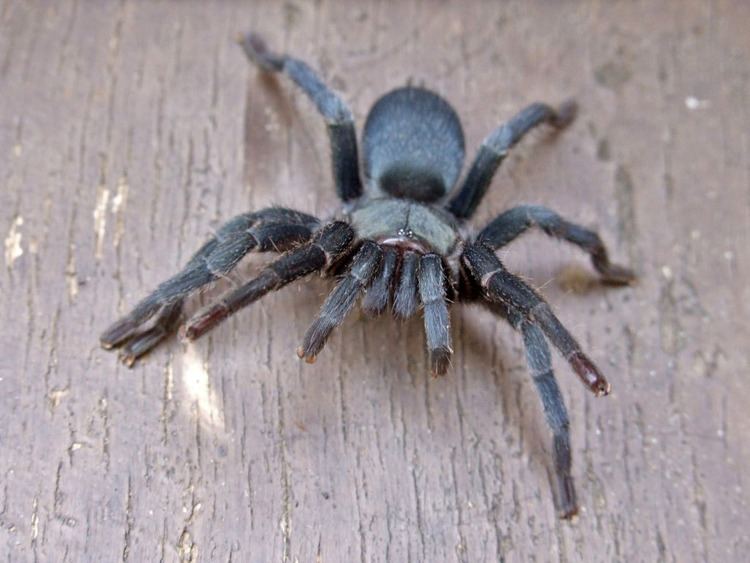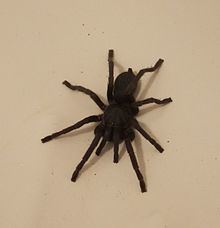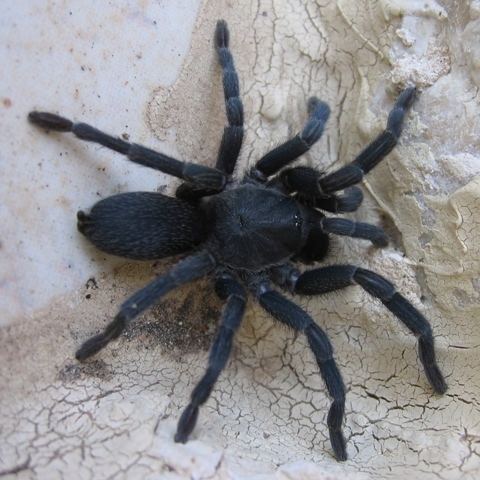Rank Species | Family Theraphosidae Scientific name Chaetopelma olivaceum Higher classification Chaetopelma Order Spider | |
 | ||
Similar Chaetopelma, Tarantula, Chaetopelma altugkadirorum, Ischnocolus, Ischnocolinae | ||
Large colony of chaetopelma olivaceum at old tomb
Chaetopelma olivaceum is a species of mygalomorph spider, belonging to the tarantula family (Theraphosidae). It has many synonyms, including Ischnocolus jerusalemensis. Common names used include black furry, black tarantula and Middle East gold.
Contents
- Large colony of chaetopelma olivaceum at old tomb
- Chaetopelma olivaceum defensive behaviour
- Range and habitat
- Description
- Behavior
- Relation to humans
- Predators
- References
Chaetopelma olivaceum defensive behaviour
Range and habitat

The species is found in the Middle East (including Israel), Turkey, Egypt, the Sudan and Cyprus. It is very common inside homes in Israel.
Description
The body size is approximately 5.5 to 5 cm for adult males and 7 to 9.5 cm or larger for females. Until the discovery of the species Cerbalus aravaensis in the Sands of Samar it was considered the largest furry spider in Israel. The color varies between black, gray and brown dark, they tend to be paler in the cooler more forested regions of their range and darker in the southern more arid areas.

The body is covered with tiny hairs and is shiny and velvety. There are variations in appearance and size throughout the range. Their food consists of insects and even small mice and young lizards.
The species is sexually dimorphic: the female is larger than the male.
Behavior

The species is active mainly at night. In the wild they can be found hiding under rocks or bark, but may reach human-occupied areas during migrations. When the spider feels threatened, it lifts its front torso, swinging its feet to expose a red stain on its mouth and claws. If the threat continues the spider will turn and look for a place to hide. C. olivaceum has been reported as living in large colonies and this has been observed in the burial caves around Jerusalem and reported from dried up wells in the Jordan Valley.
Relation to humans
This spider is not considered dangerous to humans and helps eliminating pests such as cockroaches. It is black, furry, fast and aggressive with respect to other types of tarantulas. Bites are mild but not pleasant.
Predators
In Israel two species of spider wasp, Hemipepsis brunnea and Pseudopompilus humboldti, have been recorded as predators on Chaetopelma olivaceum.
